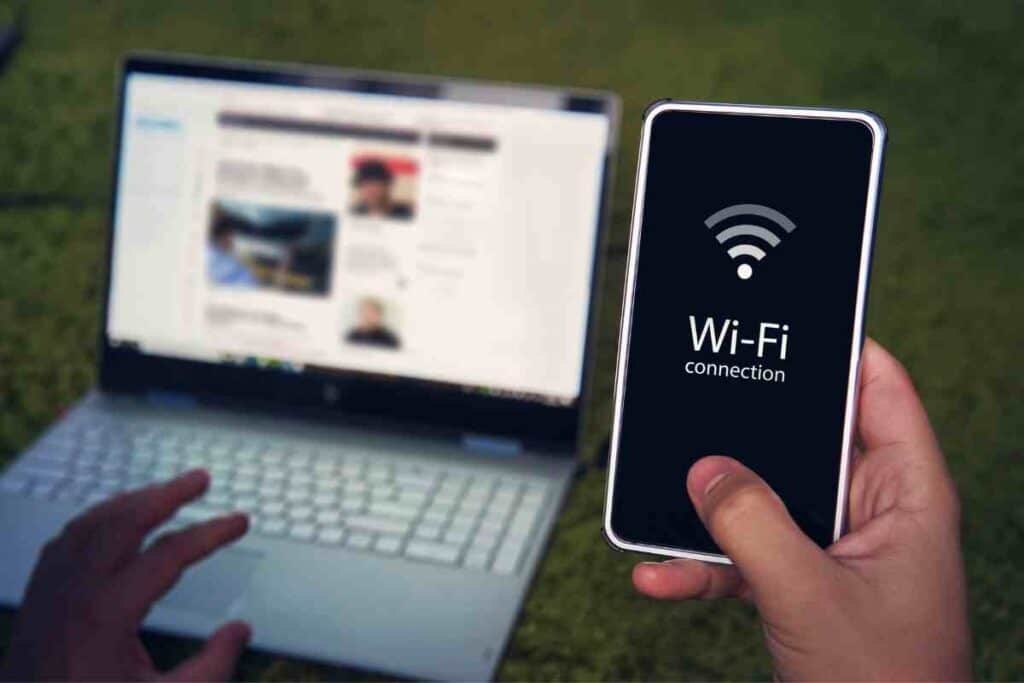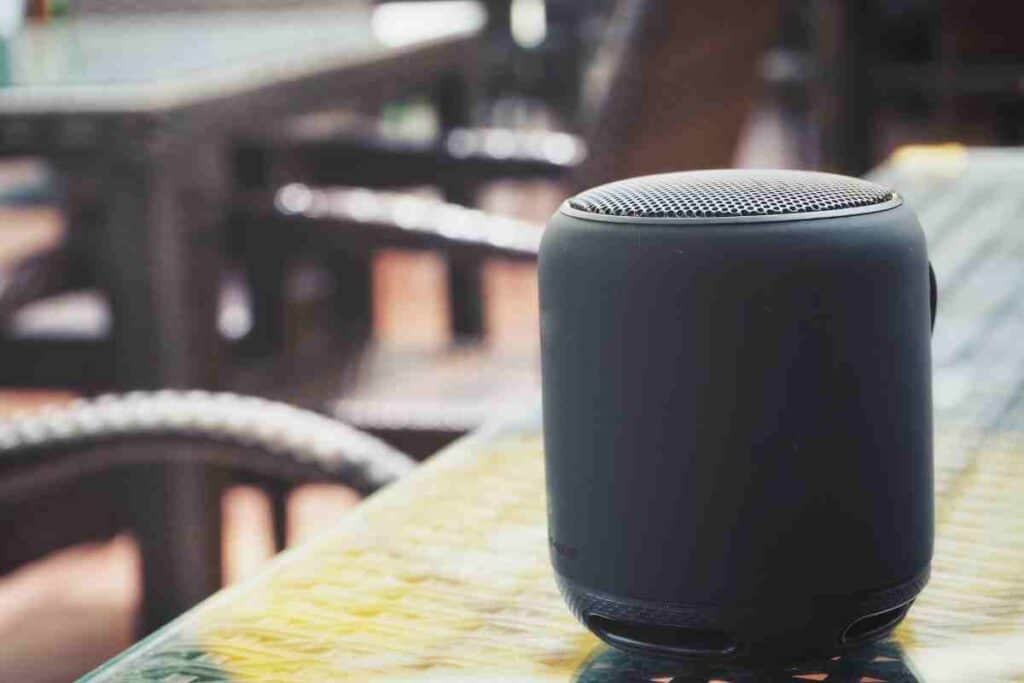What Is The Difference Between WiFi And Bluetooth?
If you have a laptop, smart TV, smart speaker, or a phone, you may have seen a WiFi and Bluetooth symbol. These two are wireless connections, but they are different. There are instances when you need WiFi and others when Bluetooth comes in handy. Which one do you need and when and are they any different?

What Is The Difference Between WiFi And Bluetooth?
The difference between WiFi and Bluetooth is that while Bluetooth connects two devices wirelessly, WiFi connects devices to the internet. With Bluetooth, you can share files from one device to the other while with WiFi you can access the internet and download, upload, or view files.
Bluetooth is a technology that enables short-range wireless communication between two or more devices. With it, you can connect your laptop and your smartphone. You can also connect your computer to your TV. The technology enables sharing of files.
Bluetooth uses radio frequencies. This means that you never have to use wires to connect devices, but you need a clear line of sight to enable communication between two devices.
WiFi has similarities to Bluetooth. For one, WiFi is also wireless communication, and it uses radio waves. However, WiFi transfers data over a short distance so that you never have to use wires.
The technology works by breaking down a signal into fragments and sending them over several radio frequencies. This way, the several devices can use the WiFi as the technology uses lower power per frequency. Since its inception in the 90s, WiFi has gone through several modifications to allow a greater bandwidth in the transfer of data.
How Does WiFi and Bluetooth Differ In Their Usage?
WiFi and Bluetooth enable wireless communication between devices and the internet and between different devices. These two communications differ in their usage and capabilities.
Bluetooth is a wireless communication technology that allows short-range transfer of data from one device to the next. In most cases, it is used in headsets, allowing mobile phone users to transfer data without using wires. Bluetooth has a limit on the number of devices that can connect at the same time.
WiFi allows connection to the internet and allows more devices and more users to join a network.
For Bluetooth to work, each connecting device needs to have an adapter. An external adapter is not necessary and this means it uses less power. It is also simpler and free to use. However, this means the range of data transfer is short and the speed is also slow.
WiFi requires more than an adapter in a device; it requires an extra device to enable one device to access the internet. That device might be a WiFi router and related devices or can be a smartphone that creates a WiFi hotspot. This way, WiFi uses more power than Bluetooth and needs a more sophisticated setup.
WiFi exceeds the capabilities of Bluetooth in range, bandwidth, and data transfer speed.
Which Devices Use WiFi and Which Use Bluetooth?
So many smart devices use both WiFi and Bluetooth to complete different connections. Some of the common Bluetooth devices include wireless speakers, wireless headphones, wireless mouse, and wireless keyboard. These devices do not need to be within the internet connection range for them to work.
WiFi devices include tablets, e-readers, smart doorbells, smart thermostats, smartphones, laptops, smart TVS, and all other smart devices. All devices labeled smart can access the internet and WiFi is needed. In a connected or smart home, most devices and appliances can connect to the internet.
Most of the smart devices allow both Bluetooth and WiFi connections. You do not need an internet connection to use Bluetooth.
Smartphones have Bluetooth capability. With these, the devices are able to share not only data but also internet connection with other devices. This is one of the instances where Bluetooth and WiFi work together.
Devices that use Bluetooth are as follows:
PCs and tablets also feature Bluetooth technology, which enables them to sync and share files across several devices. If these two have peripheral devices such as headphones, speakers, and microphones, the devices connect to the PC or tablet. This way, you never have to use cables, and you can move around with your devices with ease.
Several household appliances now have Bluetooth capability, and they allow you to control them wirelessly. You can program these appliances remotely from your mobile device. These systems include home surveillance systems, child monitors, lighting systems, and so many others.
GPS devices also come equipped with built-in Bluetooth capability. This comes connected into their telephone communications and GPS systems to make communication easy. With Bluetooth, one can connect other devices to the GPS systems such as connecting your smartphone to your car system.
Devices that connect to WiFi are as follows:
For devices to connect through WiFi, they need a common access point. While Bluetooth allows devices to connect direct, WiFi only works over a network. A wireless access point is crucial for devices to connect over WiFi.
PCs, Phones, and Tablets connect to WiFi from different locations where a wireless router is available within 100 meters. The devices can connect if they first connect to the internet through WiFi connection.
Network devices such as a printer can also connect to the WiFi. When one prints a document from the PC, the printer and the PC have to connect through a wireless access point.
Home appliances now use a wireless access point to collect data, program their settings, and connect peripheral devices. These devices include home entertainment systems, child monitors, kitchen appliances, and security systems. Surveillance systems in homes commonly connect to the internet via a wireless access point, allowing people from different locations to access security data.
What is the Difference in the Hardware Needed for Both Bluetooth and WiFi?
WiFi needs more hardware than Bluetooth. You need a transmitter and a receiver to get WiFi running.
A transmitter sends the signal on a given area so that several users can connect to the network. In most cases, people use a router as the transmitter. The router creates a network that you can connect to without using any cables or wires.
In large institutions where a router will not meet the needs of all people, a better quality transmitter comes in handy. Such a transmitter looks like a flying saucer. If you need to have more coverage, you can add a repeater, which extends the range on which you access the WiFi network.
Besides the transmitter, you need a receiver. A receiver is a piece of hardware in your device that allows you to connect to the WiFi network. People may also use a USB key, which acts as a better receiver for people with slow internet speeds or those who want to connect multiple devices.

Bluetooth is simple. You need two devices, each with a Bluetooth adapter, and you are good to go. There are no connections and no third-party devices needed to create a Bluetooth connection; all Bluetooth-enabled devices are all receivers.
What is the Difference in WiFi and Bluetooth Bandwidth and Reach?
WiFi gives a more decent bandwidth compared to Bluetooth. However, the bandwidth that you get with WiFi fluctuates, depending on the hardware you have and the number of people who connect to the network. With the best quality transmitter and receiver and only a few people on the network, you can get up to one gigabyte a second.
When the number of users on a network increases, the WiFi bandwidth reduces. In most cases, you will get up to 100 MB/S.
The Bluetooth bandwidth is lower than that of WiFi. The bandwidth depends on the version of Bluetooth your device has. Newer versions of Bluetooth are faster and offer up to 3 MB/S.
WiFi is accessible over a longer distance than Bluetooth. In most cases, you can access WiFi from a distance of up to 100 meters. In most cases, the network is accessible over 50 meters, but you can use a repeater to increase the reach. To access WiFi across thick walls, a repeater comes in handy.
Bluetooth has a short reach, probably 30 meters or less. Currently, Bluetooth version 5 has the longest reach.
Closing Thoughts
Both Bluetooth and WiFi are wireless connections. This means that hackers can intercept the communication between two devices or between a device and a network and access data they are not supposed to. WiFi is a better target for hackers as more sensitive data transmits through the network.
WiFi is more secure than Bluetooth as there are more IEEE 802.11 provisions for privacy and authentication. With WiFi, a user has to accept connection before the transfer of data begins. A hacker in a close range can send messages over open Bluetooth connections and end up installing malicious software on your devices.
These two wireless technologies ensure you do not need wires and cables to share data. Bluetooth connects devices directly while WiFi requires a wireless access point to connect devices. Most devices today are Bluetooth and WiFi-enabled for even better connectivity.